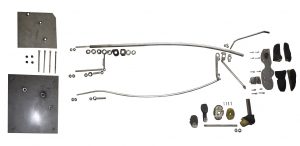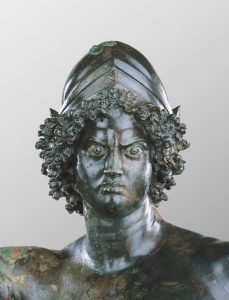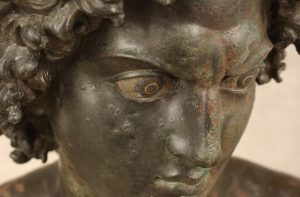Zeugma Mars
The bronze statue of Mars, the Roman god of war, was found in May 2000 in Zeugma in the Poseidon villa by the Turkish archaeological mission, directed by the Museum of Gaziantep. The bronze sculpture, almost life-sized, is without doubt one of the most interesting finds discovered during the excavations of this important archaeological site, before its partial flooding due to the construction of the Birecik dam.
The statue is of great interest on one side for its rarity, as few Roman bronzes of such size are so well preserved, and on the other for its unusual iconography, depicting the standing God as a young athlete. The figure stands with the weight centered on the right leg, while the left, slightly bent, rests only on the flexed toes. The right arm is raised, its hand closed around a spear that has not been found, while the left is bent at the elbow, to almost 90° and with the hand wielding an object that appears to be a scourge with multiple and symmetrical endings.
Beneath the helmet, thick curls frame the face of the young man whose frown is marked by strongly furrowed eyebrows and a very intense gaze, highlighted by silver and gold inlays around the pupils.
A chandelier was found along with the bronze. It is composed of a drum, similar in length to the sculpture, which passes through a disc and is inserted in a base. The small size of the space in which the artifacts were discovered and its place in the general plan of the villa suggests a closet where the precious materials were hidden to escape the pillaging of the city, carried out in 253-6 AD by the Sassanids.











